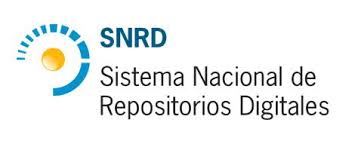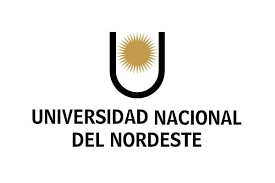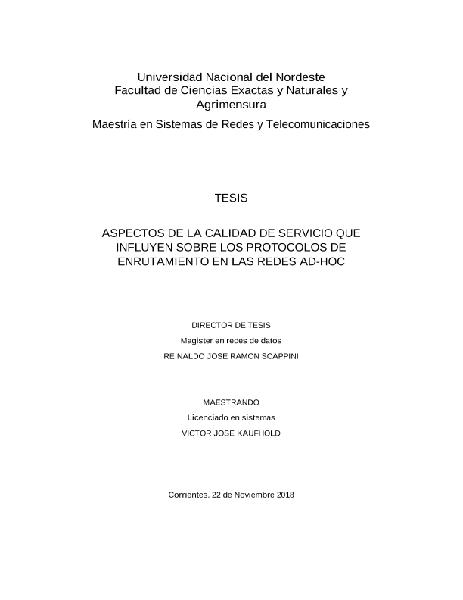Aspectos de la calidad de servicio que influyen sobre los protocolos de enrutamiento en las redes AD-HOC
Resumen
Este trabajo estudia algunos aspectos de la calidad de servicio que influyen sobre los
protocolos de enrutamiento en las redes ad hoc. Para una implementación de
enrutamiento orientado a la calidad de servicio eficiente, los requisitos de calidad de
servicio deben especificarse en el protocolo de enrutamiento. Una calidad de servicio
determinada se solicita especificando sus requisitos en términos de una o más métricas.
Este trabajo propone que esas métricas hagan referencia a la perdida de paquetes, el
retardo de paquetes y la variación de retardo de paquetes. Para poder establecer una
relación entre las métricas propuestas y los tipos de enrutamiento (proactivo y reactivo)
en las redes ad hoc se realizó una simulación de ambos tipos de protocolos variando la
cantidad de nodos en la red, utilizando diferentes velocidades en los nodos, y aplicando
los protocolos de enrutamiento. Como conclusión se pudo comprobar a través de
simulación que, en el caso de la demora de extremo a extremo, y la variación del retardo
los protocolos AODV y DSDV van empeorando su prestación a medida que aumenta el
número de nodos. El protocolo OLSR se mantiene con una prestación aproximadamente
constante. En cuanto a la perdida de paquetes los protocolo DSDV es el que ha tenido
un comportamiento más modesto. Los protocolos AODV y OLSR tienen
comportamientos similares para redes con poca cantidad de nodos. Se destaca el
comportamiento estable del protocolo OLSR para redes de 50 y más nodos. This paper studies some aspects of the quality of service that influence the routing
protocols in ad hoc networks. For an implementation of routing oriented to the efficient
quality of service, the quality of service requirements must be specified in the routing
protocol. A given quality of service is requested by specifying its requirements in terms
of one or more metrics. This paper proposes that these metrics refer to packet loss,
packet delay and packet delay variation. In order to establish a relationship between the
proposed metrics and the types of routing (proactive and reactive) in the ad hoc networks, a simulation of both types of protocols was carried out by varying the number
of nodes in the network, using different speeds in the nodes, and applying the routing
protocols. In conclusion, it was possible to verify through simulation that, in the case of
end-to-end delay, and the variation of the delay, the AODV and DSDV protocols worsen
their performance as the number of nodes increases. The OLSR protocol is maintained
with an approximately constant performance. Regarding the loss of packets, the DSDV
protocol is the one that has had a more modest behavior. The AODV and OLSR protocols
have similar behaviors for networks with a small number of nodes. The stable behavior
of the OLSR protocol for networks of 50 and more nodes is highlighted.
Colecciones
- Tesis de maestría [30]










